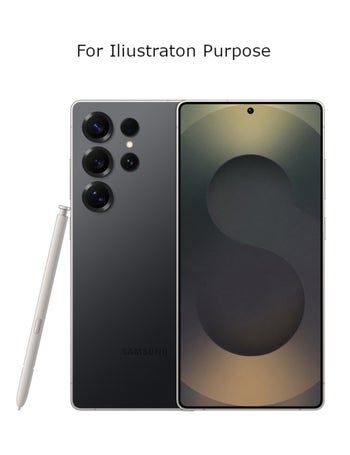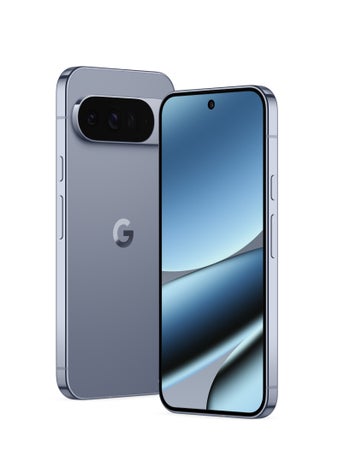Samsung Galaxy S26 Ultra vs Pixel 10 Pro XL: Main differences to expect

It's almost Galaxy S26 Ultra season, as Samsung is prepping to release the Galaxy 26 series in early 2026. Chief among the new devices will be the Galaxy S26 Ultra, Samsung's best upcoming phone.
Google, another major player in the Android market, is also a pretty important player in the US phone market, being the final of the Big Three, and it released its Pixel 10 lineup in the summer of 2025. Of these, the Pixel 10 Pro XL is clearly the best phone, despite the existence of the foldable Pixel 10 Pro Fold.
But can the Pixel 10 Pro XL survive the arrival of a more potent Galaxy flagship?
Samsung Galaxy S26 Ultra vs Apple iPhone 17 Pro Max expected differences:
| Galaxy S26 Ultra | Pixel 10 Pro XL |
|---|---|
| Design | |
| Continuation of the Galaxy S25 Ultra design, but with aluminum | The same aluminum design as the Pixel 9 Pro XL |
| Possibly thinner at 7.9 mm | Slightly thicker at 8.5 mm |
| Display | |
| 6.9-inch AMOLED | 6.8-inch OLED |
| A jump to 3,000 nits of peak brightness | 3,300 nits of peak brightness |
| Anti-reflective coating and privacy screen feature | No anti-glare coating |
| Performance | |
| Snapdragon 8 Gen 5, 3nm | Google Tensor G5, 3nm |
| 12GB RAM, 256GB - 1TB versions | 16GB RAM, 256GB - 1TB storage versions |
| Camera | |
| Quad camera (200MP + 10MP 3X + 50MP 5X + 50MP ultra) | Triple camera (50MP + 48MP ultra + 48MP 5X) |
| Sensor size improvements to the main camera | Same main camera as Pixel 9 Pro XL |
| 12MP front | 42MP front |
| Battery | |
| Smaller 5,000 mAh battery (for the 6th year in a row) | Slightly larger 5,200 mAh battery |
| An upgrade from 45W to 60W wired charging | 45W wired charging, 25W Qi2 |
| Qi2 magnetic charging with accessory support | Pixelsnap magnetic accessories |
Read more:
Design and Size
Homage to the past
With the Galaxy S26 Ultra, Samsung is not redefining the design language. Instead, it will once again reiterate the same design as the Galaxy S25 Ultra, with rounded corners at the bottom and no right angles, except for where the display meets the frame.
By the way, Samsung is reportedly dropping titanium for aluminum, which is the same move that Apple pulled with its latest pro iPhones.
Aluminum would make the phone slightly lighter and will help dissipate heat better, but it won't be as tough and scratches fairly easily.
The Pixel 10 Pro XL brings no surprises to the design language, boasting a flat aluminum frame with Gorilla Glass Victus 2 up at the front and in the rear, as well as the iconic camera strip that's getting more popular with other brands as well.
In terms of size, the Galaxy will be taller and wider, but thinner than the Pixel 10 Pro XL, at least that's what the rumor mill says.
| Galaxy S26 Ultra | Pixel 10 Pro XL |
|---|---|
| Thickness ~7.9 mm | Thickness 8.5 mm |
| Dimensions 163.4 x 77.9 mm* | Dimensions 162.8 x 76.6 |
| Weight Around 220 grams | Weight 232 grams |
The Galaxy S26 Ultra will retain the S Pen stylus, despite the rumors Samsung might drop it. The phone will retain the IP68 water and dust resistance; it doesn't seem that the higher IP69K water-resistance rating that indicates protection against water jets will get employed. The Pixel doesn't have stylus support but is also IP68-rated.
The Google phone remains a classy offering available in Moonstone, Obsidian, Porcelain, and Jade colors, while the Galaxy S26 Ultra could arrive in black, silver, and burgundy colors.
Display Differences
Some changes and improvements are reportedly coming to the Galaxy S26 Ultra, despite the main display specs staying unchanged. We will get a 6.9-inch display, a Dynamic AMOLED 2X one, with a smooth 1-120Hz refresh rate and HDR support.
Samsung will reportedly improve the brightness to 3,000 nits, a step up from the 2,600-nit peak brightness of the Galaxy S25 Ultra. Reportedly, one of the reasons for that is a new CoE OLED filter embedded into the display, which will improve its clarity and also conserve power.
Another improvement would be a new privacy film-like feature, which will reportedly utilize AI to control viewing angles in order to protect your privacy from prying eyes. That's a pretty intriguing feature that could eliminate the need for a dedicated privacy screen protector.
The Galaxy S26 Ultra will also most likely come with an anti-reflective coating that will eliminate undesirable reflections, just like the two previous generations.
The Pixel 10 Pro XL scores a slightly smaller 6.8-inch 1-120Hz OLED Super Actua display, but it is potentially slightly brighter, being officially rated at 3,300 nits. So while it may not provide the most screen real estate or offer stylus support, the phone will be the brighter one. That further boosts outdoor legibility.
| Galaxy S26 Ultra | Pixel 10 Pro XL |
|---|---|
| Size 6.9-inch | Size 6.8-inch |
| Brightness 3000 nits (peak) | Brightness 3300 nits (peak) |
| Refresh rate 1-120Hz | Refresh rate 1-120Hz |
Both the Galaxy S26 Ultra and the Pixel 10 Pro XL will rely on ultrasonic fingerprint scanners, but you can enroll your face as a convenient unlock method as well.
Performance and Software
Dual 3nm chips, but don't count on the Pixel for top perfomance
We expect the 3nm Qualcomm Snapdragon 8 Gen 5 to make its way inside the Galaxy S26 Ultra. We are possibly looking at a slightly overclocked "Made for Galaxy" version of the chipset, potentially faster than most other Android competitors, which will use the same chipset.
The Pixel 10 Pro XL relies on the 3nm Google Tensor G5 chipset, and it's not only the first 3nm Tensor, it's also the first truly custom Google chipset that's manufactured by TSMC. Previous Tensors were made by Samsung and utilized elements of the latter's Exynos chips.
However, as per our reviews and in-house tests, it's clear that the Tensor G5 has not scored vastly better performance than its predecessors and still lags behind the top offerings of Apple, Qualcomm, and MediaTek. It's just a chipset that's not geared towards such high performance, but it wouldn't have hurt to be more competitive.
We are pretty certain that the Snapdragon 8 Gen 5 for Galaxy will be victorious in terms of raw speed and efficiency, which could have repercussions for the potential battery life of the Samsung flagship.
However, as per our reviews and in-house tests, it's clear that the Tensor G5 has not scored vastly better performance than its predecessors and still lags behind the top offerings of Apple, Qualcomm, and MediaTek. It's just a chipset that's not geared towards such high performance, but it wouldn't have hurt to be more competitive.
We are pretty certain that the Snapdragon 8 Gen 5 for Galaxy will be victorious in terms of raw speed and efficiency, which could have repercussions for the potential battery life of the Samsung flagship.
| Galaxy S26 Ultra | Pixel 10 Pro XL |
|---|---|
| Chip Qualcomm Snapdragon 8 Gen 5 | Chip Google Tensor G5 |
| Process 3nm | Process 3nm |
| RAM, Storage 12/256GB 12/512GB 12/1TB | RAM, Storage 16/256GB 16/512GB 16/1TB |
The Galaxy S26 Ultra will likely come with 12 GB of RAM, which is a lowly figure for a high-end Android flagship in early 2026. The standard is closer to 16 GB RAM these days, and the Pixel 10 Pro XL is equipped with exactly that much.
The base version of both phones starts at 256 GB of storage, but you can get either one with either 512 GB or 1 TB of available storage on board.
Android 16 will be the software choice on both, with the Samsung device running the One UI 8.5 software skin on top. We love the extra layer of customizability it offers in comparison with the stock-ish Android on the Pixel 10 Pro XL. However, AI features could be a stronger forte of the Google device, which, aside from the Gemini suite of AI goodies, also offers features like the contextually aware Magic Cue.
Camera
Minor upgrades
Samsung will likely retain the very same camera setup as on the Galaxy S25 Ultra, with a quad-camera utilizing dual telephoto cameras and a large 200MP main camera.
Rumors say the phone will get a larger 1/1.1-inch sensor in comparison with the Galaxy S25 Ultra's smaller 1/1.3-inch sensor. That's great, as the larger sensor size will deliver richer dynamics, more dramatic natural bokeh, and better sharpness.
The Pixel 10 Pro XL, on the other hand, also didn't score a major hardware improvement in comparison with the Pixel 9 Pro XL, but the software has scored multiple important improvements. For example, the 5X telephoto now allows up to 100X digital zoom, which sort of matches most high-end phones hailing from mainland China.
| Galaxy S26 Ultra | Pixel 10 Pro XL |
|---|---|
| Main 200 MP, f/1.7 24 mm 1/1.1" sensor | Main 50 MP, f/1.68 24 mm |
| Ultrawide 50 MP, f/1.9 | Ultrawide 48 MP, f/1.7 13 mm |
| Telephoto 10 MP, f/2.4 3X zoom (67 mm) | Telephoto 48 MP, f/2.8 5X zoom (113 mm), 100X Pro Res Zoom |
| Periscope 50MP, f/3.4 5X zoom (111 mm) |
Battery Life and Charging
Samsung is lagging behind
For yet another (sixth) year in a row, Samsung will be using a 5,000 mAh battery. That was great back in 2020, but the onslaught of carbon-silicon batteries in recent years means that Samsung's upcoming flagship could now be trailing behind all of its rivals in terms of battery capacity. Even Apple has surpassed Samsung with the 5,088 mAh battery inside the iPhone 17 Pro Max.
We get it, Samsung is overly cautious because of the Galaxy Note 7 fiasco, but it's probably time to move on and give us a large and saucy battery.
The Pixel 10 Pro XL is one of those rivals that have already potentially beaten the Galaxy S26 Ultra in terms of battery capacity. The phone comes with a 5,200 mAh battery, the largest on any Pixel so far. Cool!
| Galaxy S26 Ultra | Pixel 10 Pro XL |
|---|---|
| Battery size 5,000 mAh | Battery size 5,200 mAh |
Charging speeds 45/60W wired 25W wireless charging Qi2 magnetic attachments | Charging speeds 45W wired 25W wireless charging Pixelsnap |
An area in which the Galaxy S26 Ultra will reportedly score an upgrade is the charging. Samsung is reportedly eyeing 60W wired charging support on the Galaxy S26 Ultra (up from the 45W on the previous models). We might also see Samsung include Qi2 support with magnets at the back, which will allow a MagSafe-like functionality. You will be able to attach MagSafe/Pixelsnap/Qi2 accessories to the back of the Galaxy. A win-win situation.
The Pixel 10 Pro XL comes with 45W wired and 25W wireless charging. It supports Qi2 and introduced its Pixelsnap system for magnetic accessory attachment, which is compatible with MagSafe.
Specs Comparison
|
|
|
| Samsung Galaxy S26 Ultra | Google Pixel 10 Pro XL |
Design
| Dimensions | |
|---|---|
| 77.9 x 163.4 x 7.9mm | 162.8 x 76.6 x 8.5 mm |
| Weight | |
| 232.0 g | |
Display
| Size | |
|---|---|
| 6.9-inch | 6.8-inch |
| Type | |
| Dynamic AMOLED, 120Hz | OLED, 120Hz |
Hardware
| System chip | |
|---|---|
| Snapdragon (3 nm) | Google Tensor G5 (3 nm) |
| Memory | |
| 12GB (LPDDR5X)/256GB (UFS 4.0) 12GB/512GB 12GB/1024GB |
16GB (LPDDR5X)/256GB (UFS 3.1) 16GB/512GB 16GB/1TB |
Battery
| Type | |
|---|---|
| 5000 mAh | 5200 mAh |
| Charge speed | |
| Wired: 45.0W Wireless: 15.0W |
Wired: 45.0W Wireless: 25.0W |
Camera
| Main camera | |
|---|---|
| 200 MP (OIS, Laser and PDAF) Sensor name: Samsung ISOCELL HP2 Aperture size: F1.7 Focal length: 24 mm Sensor size: 1/1.3" Pixel size: 0.6 μm |
50 MP (OIS, PDAF) Aperture size: F1.7 Focal length: 25 mm Sensor size: 1/1.3" Pixel size: 1.2 μm |
| Second camera | |
| 50 MP (Ultra-wide, PDAF) Sensor name: Samsung JN3 Aperture size: F1.9 Pixel size: 0.7 μm |
48 MP (Ultra-wide) Aperture size: F1.7 Sensor size: 1/2.55" |
| Third camera | |
| 10 MP (Telephoto, OIS, PDAF) Sensor name: Sony IMX754 Optical zoom: 3.0x Aperture size: F2.4 Focal Length: 67 mm Sensor size: 1/3.52" Pixel size: 1.12 μm |
48 MP (Telephoto, OIS, PDAF) Optical zoom: 5.0x Aperture size: F2.8 Focal Length: 113 mm Sensor size: 1/2.55" |
| Fourth camera | |
| 50 MP (Telephoto, Periscope, OIS, PDAF) Sensor name: Sony IMX854 Optical zoom: 5.0x Aperture size: F3.4 Focal Length: 111 mm Sensor size: 1/2.52" Pixel size: 0.7 μm |
|
| Front | |
| 12 MP (PDAF, HDR) | 42 MP |
See the full
Samsung Galaxy S26 Ultra vs Google Pixel 10 Pro XL specs comparison
or compare them to other phones using our
Phone Comparison tool
Also read:
Summary
The Galaxy S26 Ultra doesn't aim to change what worked well for the Galaxy S25 Ultra. Instead, the goal here is to improve many of the key areas, like display, performance, camera, and charging speeds.
That's fine, and while we'd have loved a larger battery inside, the upcoming phone will likely shape up to be a potentially great upgrade target for users of the Galaxy S22 Ultra and older devices, which are nearing the end of their shelf life.
The same applies to the Pixel 10 Pro XL, which is a continuation rather than an evolution over the Pixel 9 Pro XL. Google doesn't like making stark moves, so the gap between the Pixel 9 Pro XL and the Pixel 10 Pro XL is pretty much what we should brace for in the coming years.
Either way, both will be among the best top Android flagships you'd be able to get in the US in early 2026, with the Pixel having the benefit of already being on the shelves.
Follow us on Google News








![New T-Mobile CEO has everyone on the edge of their seats with new teaser [UPDATED]](https://m-cdn.phonearena.com/images/article/175840-wide-two_350/New-T-Mobile-CEO-has-everyone-on-the-edge-of-their-seats-with-new-teaser-UPDATED.webp)







Things that are NOT allowed:
To help keep our community safe and free from spam, we apply temporary limits to newly created accounts: